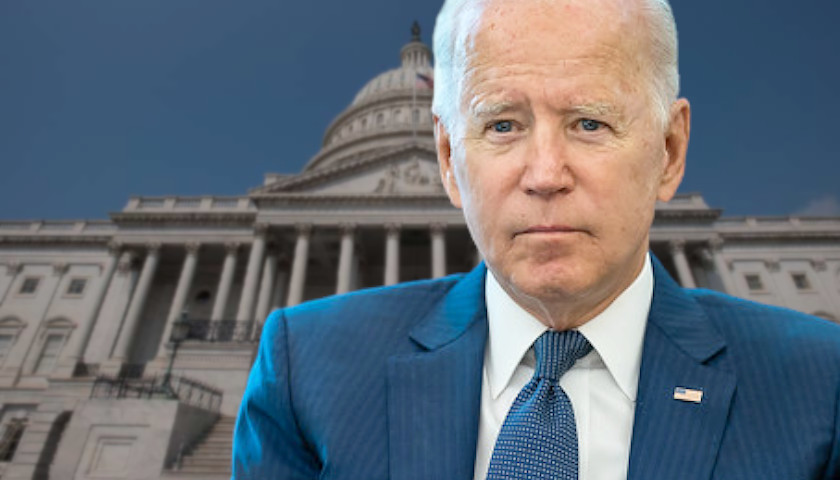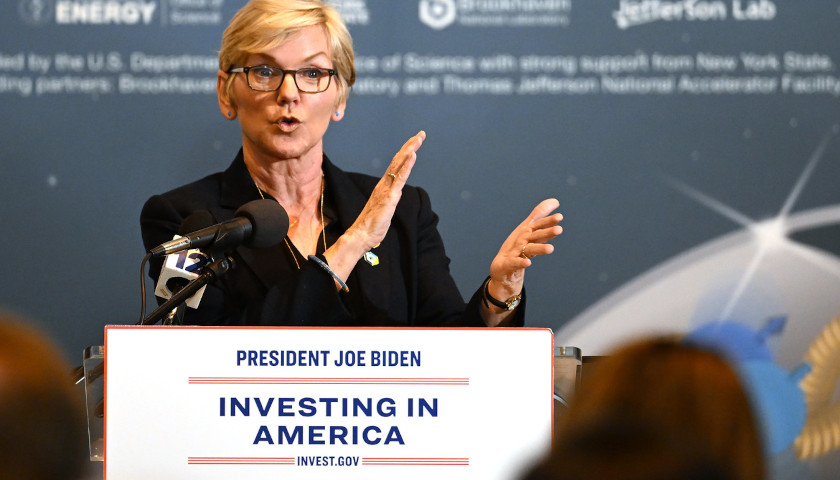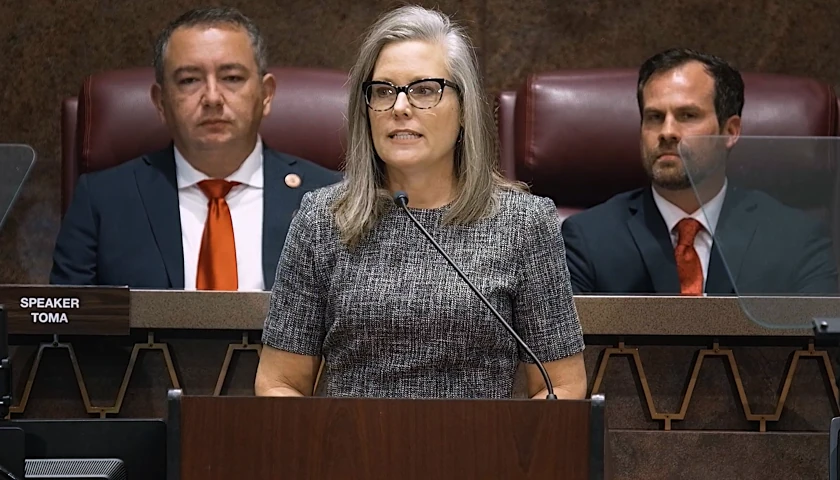by John Murawski
Under the Biden administration, more than 90 federal agencies have pledged their commitment to equity by adopting action plans that put gender, race and other such factors at the center of their governmental missions.
The Equity Action Plans, which have received little notice since they were posted online last month following a document request from RealClearInvestigations, represent a “whole of government” fight against “entrenched disparities” and the “unbearable human costs of systemic racism.”
The equity blueprints show that:
- The U.S. State Department is keen on exporting American-style gender and race consciousness into foreign diplomacy and across the globe. Citing “identity” and “intersections of marginalization” as focal points, State Department officials acknowledge that promoting these Western concepts in foreign lands may clash with “societal norms” and elicit an “unwillingness to cede power by dominant groups.”
- The Environmental Protection Agency plans to tap into “community science” from tribal nations and other interest groups, in addition to relying on academic peer-reviewed research. As the agency shifts its enforcement focus from responding to complaints to proactively initiating its own investigations, the EPA plans to fund “community scientists” to supply evidence of what it calls environmental racism and other corporate practices to be targeted for federal investigation.
- The Smithsonian Institution is embedding diversity and equity in “everything we do” across the labs and collections that make up the world’s largest museum complex. The Smithsonian has, like other agencies, enthroned a Head Diversity Officer position to coordinate these efforts, and will refocus its energies to explore “how race has informed all our lives” and affirm “the centrality of race in America.”
The Equity Action Plans are a response to an executive order President Biden signed on his first day of office in January 2021, committing his administration to pursuing “a comprehensive approach to advancing equity for all, including people of color and others who have been historically underserved, marginalized, and adversely affected by persistent poverty and inequality.”
The equity policies had been dribbling out piecemeal since last year, including the State Department’s announcement of an X gender marker in U.S. passports for gender-nonconforming citizens; the Department of Homeland Security’s guidelines, announced on the International Trans Day of Visibility, that border patrol agents will be required to use gender-neutral language and pronouns specified by foreign travelers and migrants entering the country; and the Department of Agriculture’s plan to provide debt relief to black and other “socially disadvantaged” farmers, but not to white farmers.
But a more comprehensive picture did not emerge until the release of the Equity Action Plans, which describe the incorporation of race and gender concepts that, until several years ago, largely lived in academic journals as esoteric and niche interests. The plans – ranging from 2 to 26 pages – contain marching orders for all Cabinet-level federal agencies as well as dozens of smaller, independent agencies; they are sprinkled throughout with trendy terms like BIPOC, LGBTQI+, queer, power structures, marginalization, intersectional, and gender binary.
The Equity Action Plans are only the first step in what the Biden administration calls a “generational commitment” to redressing historical disparities between political identity groups. But the full implications of the Biden strategy are obscured by the fact that the documents are short on specifics and larded with standard governmentese and boilerplate language about promoting best practices, collecting data, reducing barriers to government procurement, and contracting with disadvantaged and underrepresented groups.
In a typical bureaucratic passage, the Justice Department’s plan includes a commitment to “ask each of its major procuring bureaus to identify at least two contracting opportunities for HUBZone small businesses each fiscal year for 4 years, or until the statutory goal of 3% is met, and to compete those contracts exclusively among HUBZone firms.”
But the documents are also open-ended and can serve as a platform for significant change. In a sweeping, general statement, the Department of Agriculture vows to “continue to integrate civil rights and equity in the design of its policies and programs that span the entirety of its mandate, including areas such as food security, nutrition, natural resources and conservation, rural development, and more.”
Representatives of several groups that filed public comments described the comments as generic but promising an important first step toward empowering historically marginalized communities.
“For the most part they say the right things,” said James Goodwin, senior policy analyst with the Center for Progressive Reform, one of the nearly 500 groups that filed public comments to guide the creation of the Equity Action Plans.
“But you know words on paper are very different from action. What’s most important is that an agency’s culture changes to incorporate a lot of these things,” Goodwin said. “A lot of these things can be relegated to a check-the-box exercise which doesn’t make a major impact in the day-to-day actions of an agency, or it can be fully integrated into an agency’s DNA.”
The Biden administration is already facing pushback on the publicized details of the equity agenda, which is not popular with conservatives. Not only did a federal judge block the farming program last summer on the grounds that using racial categories to exclude white farmers is “abhorrent to the concept of equal protection,” but Republicans in Congress are challenging the Transportation Security Administration policy to reduce pat-downs of transgender travelers at airports.
And after receiving some 35,000 public comments on a Department of Education proposal to fund civics education programs that emphasize bias, discrimination, and oppression, the agency last year removed references to The New York Times 1619 Project and to best-selling self-styled “antiracist” author Ibram X. Kendi as exemplars of this approach to historical research.
The 1619 Project, which has been distributed free-of-charge to thousands of K-12 classrooms across the nation, is controversial because, among other things, it states as an incontrovertible fact that the United States was founded not as a democracy but as a “slavocracy” and that “anti-black racism runs in the very DNA of this country.” Kendi’s ideas include the assertion that antiracism necessitates discriminating against white people to balance the scales of racial justice, and that anyone who balks at implementing his agenda is beholden to racist ideas.
The Office of Management and Budget, which is shepherding the Equity Action Plans, said that the equity strategy is an ambitious goal that will require “long-term change management,” a term that suggests something like a total overhaul of organizational culture in response to an external threat to the organization’s survival. “Large scale change becomes most feasible when a sense of urgency prevails,” OMB said.
With federal agencies just getting started with the initial step of data collection, most of the equity changes to come over time haven’t been conceived yet, so the potential costs of funding, contracting, staffing and other program expenses may not be known for years. But costs almost certainly will increase. Progressive groups are urging the federal government to embed equity standards in government contracting and grant-making by abandoning the use of the classic cost-benefit analysis to assess the impact of federal regulations.
These groups contend that the cost-benefit analysis is inherently politically biased because it focuses on the economic costs to corporations without taking into account the social costs and benefits to race, gender, and other identity groups. “It is precisely this commitment to supposed ‘moral objectivity’ that has left the practice vulnerable to producing racially disparate results,” the Center for Progressive Reform wrote in its public comment.
In an interview, Goodwin described conventional cost-benefit analysis as a worldview and an ideology masquerading as a neutral, apolitical metric.
The Center for Progressive Reform also said in its public comment that federal agencies, when seeking input on proposed regulations, should consider accepting statements in the form of “hip hop music, graphic novels, collages or street art,” rather than limiting public comment to formal statements.
The Office of Management and Budget has issued a statement saying the Equity Action Plans “are part of a broader equity agenda, which also includes implementing the first-ever national strategy on gender equity and equality.”
Goodwin and Amit Narang, the regulatory policy advocate at Public Citizen, noted that a key prong in the Biden administration’s strategy is the Modernizing Regulatory Review memorandum, also from January 2021, which says federal policy should be assessed not just for corporate cost but also for equity and justice.
Guidelines from that memo, due later this year, are expected to provide further details on how the Biden administration hopes to redistribute the costs and benefits of federal policy. In interviews, social justice advocates offered the example of the wheelchair access ramp as a social benefit that carries a corporate cost but also provides incalculable social benefits that cannot be quantified in dollar terms. They say that racial and gender equity should be viewed in the same way as a wheelchair access ramp.
But social justice advocates also noted that the administration’s definition of “equity” in the original Executive Order and this year’s Equity Action Plans is disappointingly narrow compared with the more commonly accepted understanding of the term in the diversity and equity industry. The Executive Order defines “equity” as fair and impartial treatment of all people, including rural Americans, whereas the term has broadly come to mean preferential treatment for racial, sex, and gender identity groups deemed to have been historically marginalized and oppressed, in order to produce demographically representative outcomes.
“The definition they put forward is basically saying: Going forward from here things are going to be procedurally fair and they’re going to be free from bias in the implementation of our programs,” said Kyle Moore, an economist at the Economic Policy Institute.
“That’s an important step but removing bias is not enough to close these [racial] gaps that we’re seeing,” Moore said. “There needs to be a policy of redressing past harms. That may mean developing policies that disproportionally benefit groups that have been disadvantaged in the past, not simply providing relief for those groups, but a leg up.”
– – –
John Murawski reports on the intersection of culture and ideas for RealClearInvestigations. He previously covered artificial intelligence for the Wall Street Journal and spent 15 years as a reporter for the News & Observer (Raleigh, NC) writing about health care, energy and business. At RealClear, Murawski reports on how esoteric academic theories on race and gender have been shaping many areas of public life, from K-12 school curricula to workplace policies to the practice of medicine.








